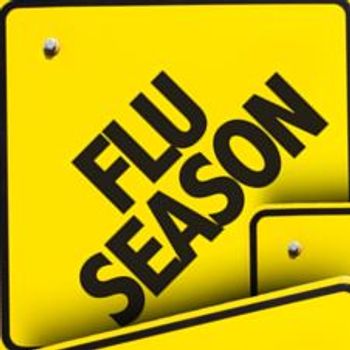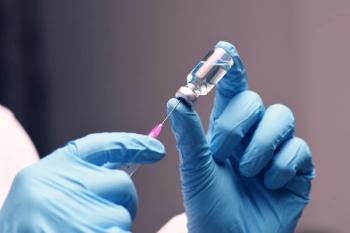
Sexually Transmitted Infections: A Case Challenge
Sexually transmitted infection cases have reached an all-time high at an alarming speed. Test your knowledge of different treatment options with our new case challenge.
Sexually transmitted infections (STIs) in the US
1. An 18-year-old high school senior comes to your office for a routine annual physical before heading off to college. She is sexually active and does not always use a condom. She denies any symptoms of STIs. In this patient, the CDC recommends routine annual screening for which of the following?
A. Chlamydia trachomatisB. Human papilloma virus (HPV)
C. Neisseria gonorrhoeaeD. Both A and C
Answer: D. Both A and C. In the US, rates of STIs are highest among adolescents and young adults with rates of chlamydia and gonorrhea highest among the women. In sexually active women aged <25 years, the CDC recommends routine annual screening for C. trachomatis and N. gonorrhoeae. CDC also recommends discussing and offering HIV testing to all adolescents. Routine screening for syphilis, trichomoniasis, HSV, HPV, Hepatitis A, Hepatitis B, and bacterial vaginosis are not recommended in asymptomatic adolescents. The physician should also discuss safe sex practices, condoms, and birth control with this patient.
2. A 25-year-old man who has sex with men describes a mucopurulent penile discharge, painful ejaculation, and blood in his urine, as well as itching and tenderness of the penis. Physical examination reveals enlarged lymph nodes in the groin. Results of nucleic acid modification test are positive for Mycoplasma genitalium.
Which of the following is the preferred treatment for urethritis caused by M. genitalium?
A. Penicillin G
B. Doxycycline
C. Azithromycin
D. Metronidazole
Answer: C. Azithromycin. M. genitalium is responsible for 15% to 20% of nongonococcal urethritis and 20% to 25% of nonchlamydial nongonococcal urethritis. While a 7-day treatment with doxycycline is generally recommended for urethritis, this drug is usually not effective against M. genitalium. Research has shown that a single dose of azithromycin is more effective than doxycycline against M. genitalium, and is the preferred drug, although resistance is rapidly emerging. A longer duration of treatment may be more effective than a single dose, but patients who have not responded to the single dose may also fail to respond to extended treatment. Moxifloxacin may be considered in patients with treatment failure, but has not been tested in clinical trials.
3. A 30-year-old man comes to your clinic and describes muscle and joint pain, fever, and feeling generally unwell for the past 2 to 3 months. Physical examination is pertinent for a skin rash on the palms of his hands and soles of his feet, and swollen lymph nodes around his penis. He says that about 6 weeks ago he had a sore on his penis, but it healed on its own. Results of rapid plasma reagin are positive and results of fluorescent treponemal antibody absorption are confirmatory. He has never been treated for syphilis and reports that he is allergic to penicillin.
Which of the following treatment options is available to him?
A. Doxycycline
B. Tetracycline
C. Azithromycin
D. All of the above
Answer: D. All of the above. The CDC recommends that patients with primary and secondary syphilis who have never been treated should be offered treatment with benzathine penicillin G. However, approximately 8% to 10% of people in the US are allergic to penicillin. For nonpregnant individuals who are allergic to penicillin, treatment options include doxycycline, tetracycline, ceftriaxone, and azithromycin. Azithromycin is not first line and not for use in MSM, HIV positive individuals, or pregnant women. However, research evidence for these options is limited.
4. A 22-year-old college student comes in for her annual physical. She is feeling great because she has a new boyfriend. She is sexually active and reveals that she does not always use condoms. She says she sometimes experiences pain during sex, which she attributes to condoms. She denies any other symptoms of STIs. First catch urine test is positive for chlamydia.
Which of the following regarding chlamydia infection in this patient is true?
A. She is at increased risk for subclinical pelvic inflammatory disease
B. She is at increased risk for cervical cancer
C. She is at increased risk of blindness
D. She is at increased risk for heart failure
Answer: A. She is at increased risk for subclinical pelvic inflammatory disease. Chlamydia is the most common STI in the US, and disproportionately affects individuals aged ≤24 years. Symptoms include pain/burning on urination, pain during sex, lower abdominal pain, vaginal or penile discharge, bleeding between periods and swollen/tender testicles, although asymptomatic infection is common. Women are at increased risk for subclinical pelvic inflammatory disease, ectopic pregnancy, and infertility. Reinfection rates are common and partners of women with chlamydia should also be treated. HPV is a leading cause of cervical cancer. Tertiary syphilis can cause blindness and heart failure.
5. A 16-year-old boy comes to your office for a high school sports physical. You inquire about his HPV vaccination status and his mother responds that she thought the vaccine was only for girls. She asks if it’s too late for him to receive the vaccine. You explain the CDC guidelines regarding HPV vaccine for boys and she agrees that he should begin the series.
Which of the following HPV vaccines is recommended in boys?
A. Cervarix
B. Gardasil
C. Bivalent vaccine
D. All of the above
Answer: B. Gardasil. The HPV vaccine is recommended in boys aged 11-12 years, but may be given to boys as young as age 9 and up to age 21 years. The vaccine is given in a 3-dose series over a 6-month period. In boys, the quadrivalent vaccine (Gardasil) and the 9-valent vaccine (Gardasil 9) are recommended. Gardasil protects against 4 types of HPV and Gardasil 9 against an additional 5 strains. Both Cervarix (bivalent) and Gardarsil are recommended for girls. The bivalent vaccine protects against HPV type 16 and 18, which cause about 66% of all cervical cancers.
6. A 24-year-old woman comes to your clinic for her first prenatal visit. She is 7 weeks pregnant and feels physically fine but admits she is quite upset because she thinks her husband is cheating on her. Routine pregnancy screening is positive for gonorrhea.
Which of the following treatments is recommended?
A. Penicillin G
B. Ceftriaxone
C. Azithromycin
D. Both B and C
Answer: D. Both B and C. Screening in pregnant women for gonorrhea is usually performed at the first prenatal visit. The CDC recommends treatment of gonorrhea in pregnant women with dual therapy (ceftriaxone 250 mg in a single IM dose and azithromycin 1 g orally as a single dose). Neonates born to women with untreated gonococcal infection are at risk for perinatally transmitted infection, the most serious of which is ophthalmia neonatorum (which can cause blindness) and sepsis. Most states require newborns to receive prophylaxis with erythromycin eye ointment shortly after birth.
References:
Centers for Disease Control and Prevention. 2015 Sexually Transmitted Diseases Treatment Guidelines. Accessed April 15, 2019 at:
Newsletter
Enhance your clinical practice with the Patient Care newsletter, offering the latest evidence-based guidelines, diagnostic insights, and treatment strategies for primary care physicians.


















































































































































































































































































